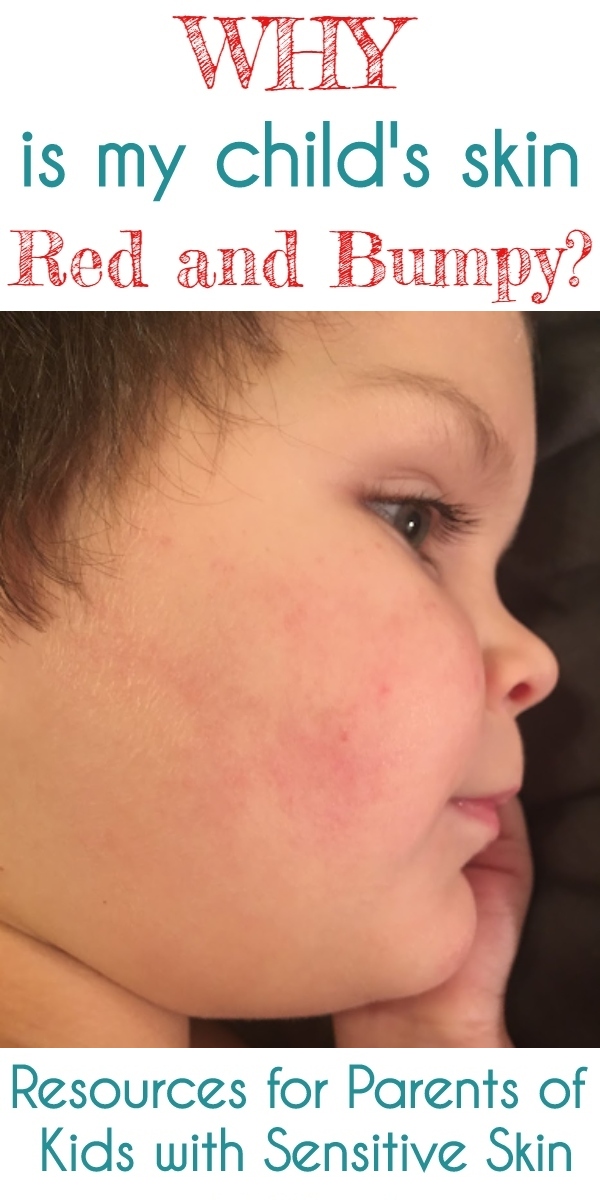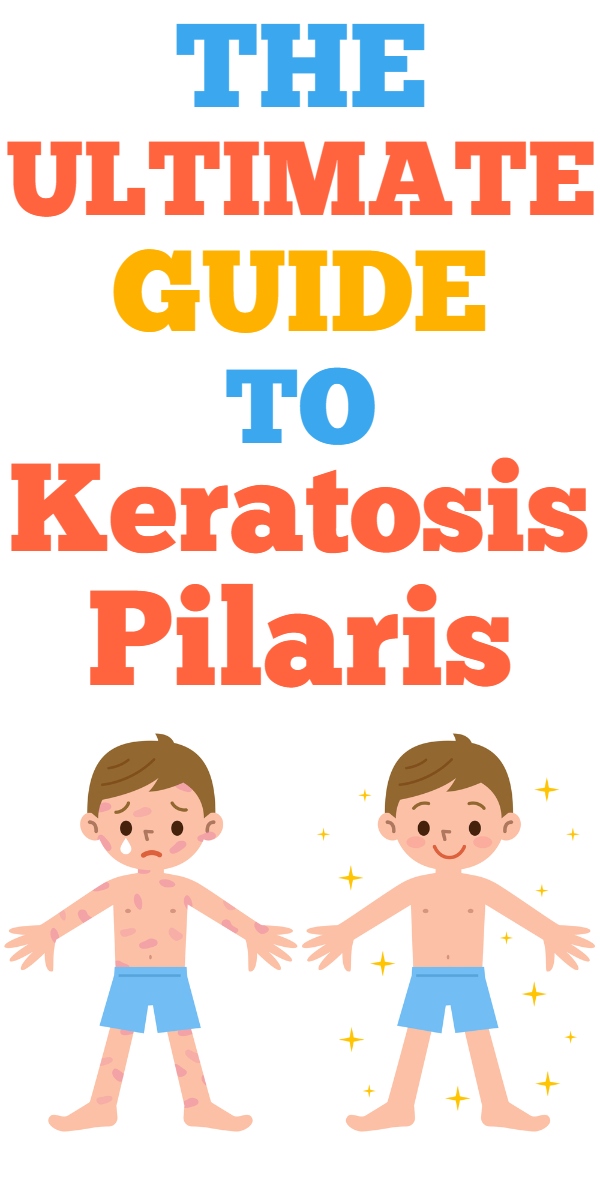When we think about raising kids we like to think about all the good times. The learning moments, the triumphs, all the firsts. We don’t like to think about all the “Oh crap, I have to actually keep this tiny human alive no matter what happens” moments as much…until they smack us in the face.
One of the biggest stresses on parents is the health of their children, and in today’s society there seems to be even more pressure, even more, “are you SURE your kid doesn’t have (insert weird disease name here)” kind of stuff out there.
What’s a mom or dad to do? Most of us aren’t pediatricians, and most of us realize that it’s a little helicopter-y to run the crew to urgent care with every new symptom.
Skin issues can be one of the most confusing, frustrating, scary things to happen to your little one. Baby acne, dermatitis (aka hives), eczema–these are all super common skin ailments young ones struggle through, and each one requires it’s own treatment.
Treatments only work if they’re appropriate for what you’re dealing with. And in the midst of all the information out there, there is another very common skin condition–keratosis pilaris–that maybe you haven’t considered or even heard of.
Could that be what you’re fighting against?

This post may contain affiliate links. See our disclosure for details.
What is Keratosis Pilaris (KP) A.K.A “Chicken skin”?
KP is a genetic skin condition characterized by small acne-like bumps or rough patches of skin usually on certain areas of the body–thighs, back of arms, and sometimes face. The patches of skin are sometimes referred to as “chicken skin” because it can look a little like the skin of a chicken that’s been plucked over–for obvious reasons that’s not our preferred term.
It is caused by an over-production and subsequent build-up of keratin in the pores of the skin. Keratin is good. You need it. It makes your skin, hair, and nails strong and protective, but if you have too much…boom, KP.
A lot of people have KP and don’t even know it, or they find out about it by chance while getting treatment for something else. Some estimations say that as many as 50-80% of children have KP!
KP is not contagious and is completely benign other than the appearance; which can range from small rough patches that are barely noticeable to widespread red and inflamed bumps that seem to want to take over your skin.
KP usually doesn’t itch, but in severe cases, people can develop larger, pimple-like bumps that can be sensitive to the touch.
People with KP are usually diagnosed when they are children and most people see their KP greatly reduced or completely cleared by age 30–thank goodness.
Here are a few examples of how Keratosis Pilaris could present itself:



…as many as 50-80% of children have KP!
What else could it be??
We aren’t dermatologists, and most likely you aren’t either–you’d already know all this right? Skin conditions can be tricky to pin down for sure so we want to devote a little time to a few other skin ailments that you might also want to consider.
Baby acne
If you’ve had a baby or been around a newborn with any consistency, you’ll be familiar with baby acne. It’s pretty much just like the acne that plagued most of us through those awkward, hormone-fueled days of blossoming adulthood. Yep. Baby acne is caused by a similar rush of chemicals around 3-4 weeks old that help our babies grow and develop during those first few weeks of life in the real world.
These pimples/zits (that’s exactly what they are) typically show up on the face but can develop on the neck and chest. They are a little unsightly, sure, but just take it as a sign that you’re little baby is growing and adjusting to life in all the right ways. It should clear up after a few weeks without any treatment, so if you experience that, then it’s probably not KP.
Diaper rash
Even more ubiquitous with baby life than baby acne is probably diaper rash. Those little booties get all wrapped up in a diaper and the mess that it absorbs can irritate the sensitive skin of our little guys and gals. If you’re battling with diaper rash, try some nakey time (our boys always love nakey time) on a towel or protective pad.
This play time can allow the skin to dry out so that it can heal up a little quicker. Also, use a cream when you switch to a fresh diaper.
This one is phenomenal.
Diaper rash should clear up quickly, but in severe cases of KP, bumps can creep up onto the bum and can get exacerbated with increased irritation that comes with diaper probs.
Dermatitis
A.K.A. hives. These are bumps or a rash that pops up after some kind of exposure or event that causes histamine to be released by the body. It’s what accompanies an “allergic reaction”.
They often look like a bug bite with red and raised patches that typically itch like crazy. You get hives when your immune system is reacting to something like food, meds, or an illness.
Hives can be serious if they are paired with swelling of the throat or mouth which makes breathing difficult. If you know or even think that might be the case, call 911, STAT!
If it’s not that serious, a little Benadryl typically helps (but always follow your healthcare providers advice about medications and dosing). Short-lived flare-ups like that are definitely not KP.
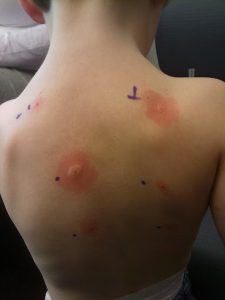

Eczema
Here’s where things can be a bit tricky. Differentiating between Keratosis Pilaris and Eczema can be challenging. They look similar to each other–rough patches of skin, redness, small bumps, but the difference lies with the cause and the location of symptoms. Like we said before, KP is caused by keratin build-up and is typically seen only on certain areas of the body.
Eczema, on the other hand, is usually a reaction to some kind of irritant for people with sensitive skin and can pop up anywhere on the body. Eczema is often used as a catch-all term for skin reactions that aren’t textbook dermatitis.
With eczema, removing the irritant and using a good lotion can keep it at bay. Since KP is more of a physiological process, you may have a harder time controlling its symptoms.
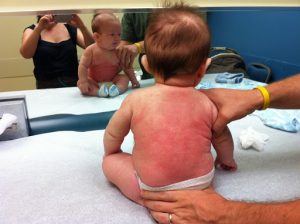
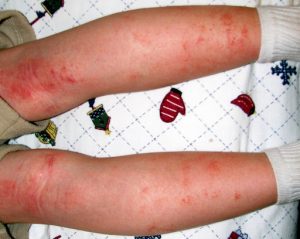
These are all common, non-contagious skin conditions. Obviously, there are about a bazillion other things that could be going on and if you want more information or a super helpful guide to lots of other skin conditions check out this handy guide from Pregnant Chicken.
So…what’s keratosis pilaris treatment look like?
Treatment for KP focuses on exfoliation and moisturization. Exfoliation to remove as much of that pesky keratin buildup as possible, and moisturization to keep the skin healthy and calm and happy.
When exfoliating, you gotsta be gentle. If you are too aggressive, you may end up causing some unwanted inflammation. That’ll just make things worse. Use an exfoliating cloth or better yet, make your own sugar scrub. Use a gentle soap and cooler water as well to help limit any inflammation and keep things nice and calm.
Listen up! Next, you need to moisturize (and this is HUGELY important) immediately after bathtime. This helps to trap as much moisture in the skin as possible. Moisture keeps the skin healthy and limits the keratin buildup along the way. Here are some of the most popular moisturizers to use as your first line of attack against KP.
Coconut Oil
This could be a great first treatment option or treating infants. It’s especially gentle and great for treating KP on sensitive areas like the face. You’ll want to be sure to get high-quality coconut oil for applying to skin. This is great and practically lasts forever.


Amlactin
This moisturizer is designed specifically for Keratosis Pilaris and contains alpha hydroxy acid (AHA) to assist in removing that excess keratin. Amlactin is pretty gentle but always use caution when trying a new product. Test a small amount first before going all in. This also tends to be one of the first treatments recommended by doctors to treat KP.


CeraVé
Lots of people have had success with this lotion. CeraVé makes quality products and parents have found them helpful for treating KP.


When to see your doctor
This article is meant to be a helpful guide to parents trying their best to take care of their kiddos. We aren’t doctors and we don’t pretend to have all the answers. If you have specific concerns about your health or your child’s health always seek the guidance of a healthcare provider. That being said, you should definitely not hesitate if you are seeing any of these issues:
- Swelling
- Rashes that spread quickly
- Areas of skin that are hot or painful to the touch
- Sores with drainage
- Any new symptom that can’t be explained
What’s next?
Treating KP can be tricky (just ask the parents in our facebook group and we are merely scratching the surface here–no pun intended. If you or your kid has KP, check out our growing library of resources (especially this article on 5 things to NOT do), sign-up for the KP Crash Course, and subscribe to our email list so that when we have something valuable for you, we can share it.
